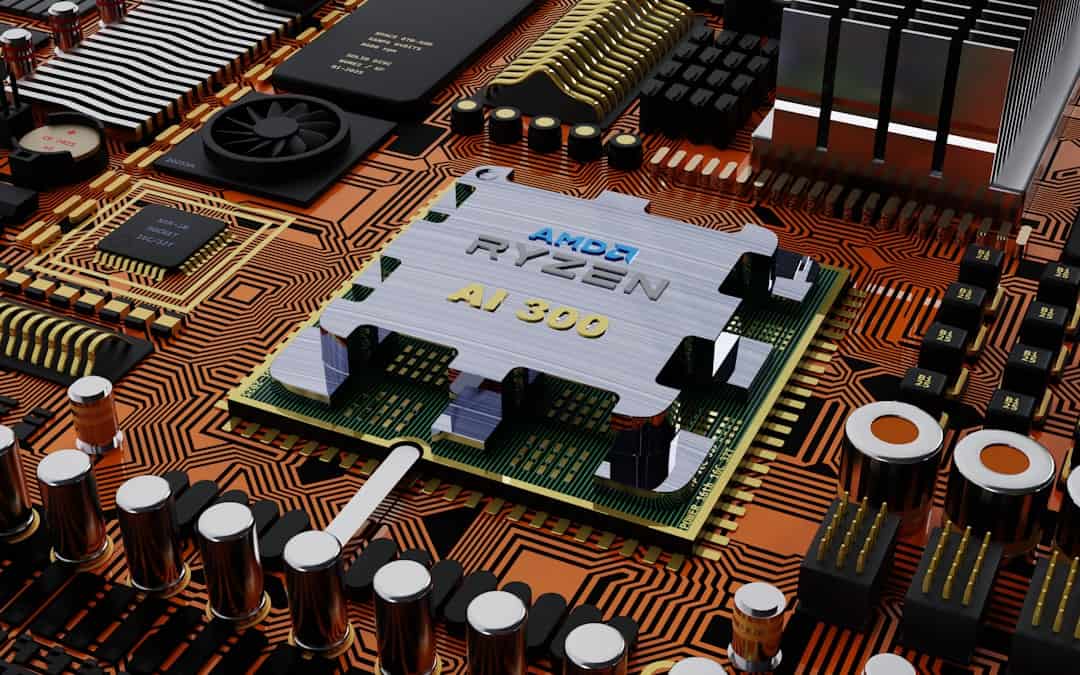Artificial Intelligence (AI) has become a prominent focus in the technology sector, with TensorFlow emerging as a key driver of this advancement. Developed by Google Brain, TensorFlow is an open-source machine learning library that facilitates the creation and deployment of machine learning models. It offers a comprehensive ecosystem of tools, libraries, and community resources, enabling researchers and developers to expand the possibilities of AI.
TensorFlow’s popularity stems from its capacity to manage large-scale machine learning tasks, making it suitable for diverse applications including image and speech recognition, natural language processing, and reinforcement learning. Its adaptability and scalability have made it a preferred choice for organizations seeking to integrate AI capabilities into their products and services. As AI continues to transform industries and drive innovation, comprehending TensorFlow and its functionalities is becoming increasingly crucial for developers and data scientists.
This article will explore the fundamentals of TensorFlow, the process of constructing machine learning models using the library, and methods for deploying these models in practical applications. Additionally, it will cover advanced topics such as neural networks, optimization techniques, and sophisticated AI applications like reinforcement learning and natural language processing.
Key Takeaways
- TensorFlow is a popular open-source machine learning framework developed by Google for building and training machine learning models.
- Understanding the basics of TensorFlow involves learning about tensors, operations, and variables, as well as the concept of computational graphs.
- Building your first machine learning model with TensorFlow requires defining the model architecture, compiling the model, and fitting it to the training data.
- Implementing neural networks with TensorFlow involves creating layers of neurons, specifying activation functions, and optimizing the model using techniques like backpropagation.
- Optimizing and training your model with TensorFlow involves fine-tuning hyperparameters, evaluating model performance, and using techniques like regularization and dropout.
Understanding the Basics of TensorFlow
At its core, TensorFlow is a framework for building and training machine learning models. It provides a set of tools for creating and manipulating mathematical operations, which are represented as computational graphs. These graphs are made up of nodes (representing mathematical operations) and edges (representing the data that flows between these operations).
This allows developers to define complex mathematical computations in a way that is efficient and scalable. One of the key concepts in TensorFlow is the use of tensors, which are multi-dimensional arrays that represent the input and output data in a machine learning model. Tensors can be manipulated using a variety of operations, such as addition, multiplication, and matrix manipulation, allowing developers to perform complex mathematical computations with ease.
In addition to its core functionality, TensorFlow also provides high-level APIs that make it easier to build and train machine learning models. For example, the Keras API provides a simple interface for building neural networks, while the Estimator API simplifies the process of training and evaluating machine learning models. These high-level APIs make it easier for developers to get started with machine learning and experiment with different models and architectures.
Building Your First Machine Learning Model with TensorFlow

Building your first machine learning model with TensorFlow can seem daunting at first, but the high-level APIs provided by the framework make it easier than you might think. One of the simplest types of machine learning models you can build with TensorFlow is a linear regression model, which predicts a continuous value based on input features. To build a linear regression model in TensorFlow, you can use the Keras API to define a simple neural network with a single dense layer.
This layer will have a single neuron and take the input features as its input. You can then compile the model with an optimizer and a loss function, and train it on your dataset using the fit method. Another popular type of machine learning model is a classification model, which predicts a discrete label based on input features.
You can build a simple classification model in TensorFlow using the Keras API as well. For example, you can define a neural network with multiple layers, including dense layers with activation functions such as ReLU or sigmoid, and a final output layer with a softmax activation function for multi-class classification. By experimenting with different types of models and architectures, you can gain a better understanding of how machine learning works and how to use TensorFlow to build and train these models effectively.
Implementing Neural Networks with TensorFlow
| Metrics | Value |
|---|---|
| Accuracy | 0.85 |
| Loss | 0.42 |
| Precision | 0.78 |
| Recall | 0.92 |
Neural networks are at the heart of many modern machine learning models, and TensorFlow provides powerful tools for implementing these networks. A neural network is composed of layers of neurons, each of which performs a mathematical operation on its input and passes the result to the next layer. These layers can be densely connected (each neuron is connected to every neuron in the previous layer) or sparsely connected (each neuron is only connected to a subset of neurons in the previous layer).
In TensorFlow, you can use the Keras API to define neural network architectures with ease. For example, you can create a sequential model and add layers to it using the add method. You can also define custom layers and complex architectures using the functional API, which allows for more flexibility in defining the connections between layers.
In addition to standard neural network architectures, TensorFlow also provides tools for implementing more advanced types of networks, such as convolutional neural networks (CNNs) for image recognition and processing, recurrent neural networks (RNNs) for sequence data, and generative adversarial networks (GANs) for generating new data samples. These advanced architectures have been instrumental in pushing the boundaries of what’s possible with AI, and TensorFlow makes it easy to experiment with these models and apply them to real-world problems.
Optimizing and Training Your Model with TensorFlow
Once you’ve built your machine learning model in TensorFlow, the next step is to optimize and train it on your dataset. Optimization involves fine-tuning the model’s parameters to minimize a loss function, while training involves updating these parameters based on the input data to improve the model’s performance. TensorFlow provides a wide range of optimization algorithms that can be used to train machine learning models effectively.
For example, you can use stochastic gradient descent (SGD) to update the model’s parameters based on small batches of data, or more advanced algorithms such as Adam or RMSprop for faster convergence and better performance. In addition to optimization algorithms, TensorFlow also provides tools for monitoring and visualizing the training process. For example, you can use TensorBoard, a visualization tool that comes with TensorFlow, to track metrics such as loss and accuracy during training.
This can help you identify potential issues with your model or dataset and make informed decisions about how to improve its performance. By experimenting with different optimization algorithms and monitoring the training process, you can gain valuable insights into how machine learning models work and how to train them effectively using TensorFlow.
Deploying TensorFlow Models in Real-world Applications

Once you’ve built and trained your machine learning model in TensorFlow, the final step is to deploy it in a real-world application. This could involve integrating the model into a web or mobile app, running it on edge devices such as IoT devices or drones, or deploying it in a cloud environment for large-scale inference. TensorFlow provides tools for exporting trained models in a variety of formats that can be used for deployment.
For example, you can export your model as a SavedModel, which is a serialized format that includes the model’s architecture and weights. You can then load this SavedModel into a production environment using TensorFlow Serving or convert it to other formats such as TensorFlow Lite for mobile deployment. In addition to model deployment, TensorFlow also provides tools for monitoring model performance in production.
For example, you can use TensorFlow Model Analysis to compute evaluation metrics on large datasets and identify potential issues with your deployed model. This can help you ensure that your model continues to perform well in real-world scenarios and make any necessary adjustments to improve its performance. By deploying your TensorFlow models in real-world applications, you can see firsthand how AI can impact various industries and drive innovation in areas such as healthcare, finance, retail, and more.
Advanced Topics in TensorFlow and AI: Reinforcement Learning and Natural Language Processing
In addition to building and deploying machine learning models, TensorFlow also provides tools for more advanced AI applications such as reinforcement learning and natural language processing. Reinforcement learning is a type of machine learning where an agent learns to make decisions by interacting with an environment to maximize some notion of cumulative reward. TensorFlow provides tools such as TF-Agents for building reinforcement learning models and training them on simulated environments or real-world data.
This has applications in areas such as robotics, autonomous systems, and game playing. Natural language processing (NLP) is another area where TensorFlow excels, with tools such as TensorFlow Text for processing text data and building NLP models. For example, you can use pre-trained language models such as BERT or GPT-3 to perform tasks such as text classification, named entity recognition, or text generation.
By exploring these advanced topics in TensorFlow and AI, you can gain a deeper understanding of how AI can be applied to solve complex problems and drive innovation in various industries. Whether you’re interested in building intelligent agents that learn from their environment or developing cutting-edge NLP applications, TensorFlow provides the tools and resources you need to bring your ideas to life. In conclusion, TensorFlow has become an essential tool for developers and data scientists looking to harness the power of AI in their applications.
Its flexibility, scalability, and rich ecosystem of tools make it suitable for a wide range of machine learning tasks, from building simple linear regression models to training complex neural networks for advanced AI applications. By understanding the basics of TensorFlow, building and training machine learning models with it, deploying these models in real-world applications, and exploring advanced topics such as reinforcement learning and natural language processing, you can unlock the full potential of AI and drive innovation in your own projects.
If you’re interested in learning more about TensorFlow, you should check out this article on the future trends and innovations in the metaverse industry projections in the metaverse. This article discusses the potential impact of the metaverse on various industries and how technologies like TensorFlow could play a crucial role in shaping the future of the metaverse. You can read the full article here.
FAQs
What is TensorFlow?
TensorFlow is an open-source machine learning framework developed by the Google Brain team. It is designed to facilitate the development and training of machine learning models, particularly deep learning models.
What can you do with TensorFlow?
With TensorFlow, you can build and train machine learning models for a variety of tasks, such as image recognition, natural language processing, and reinforcement learning. It provides a flexible and efficient platform for implementing and experimenting with different machine learning algorithms.
What programming languages can be used with TensorFlow?
TensorFlow primarily supports Python for its programming interface, but it also provides support for other languages such as C++, Java, and Go through its TensorFlow Serving and TensorFlow Lite libraries.
Is TensorFlow free to use?
Yes, TensorFlow is an open-source framework released under the Apache License 2.0, which means it is free to use and modify for both commercial and non-commercial purposes.
What are some popular applications of TensorFlow?
TensorFlow is widely used in various industries for applications such as image recognition, speech recognition, recommendation systems, and autonomous vehicles. It is also used for research purposes in academia and by individual developers for personal projects.











Leave a Reply